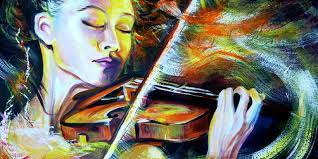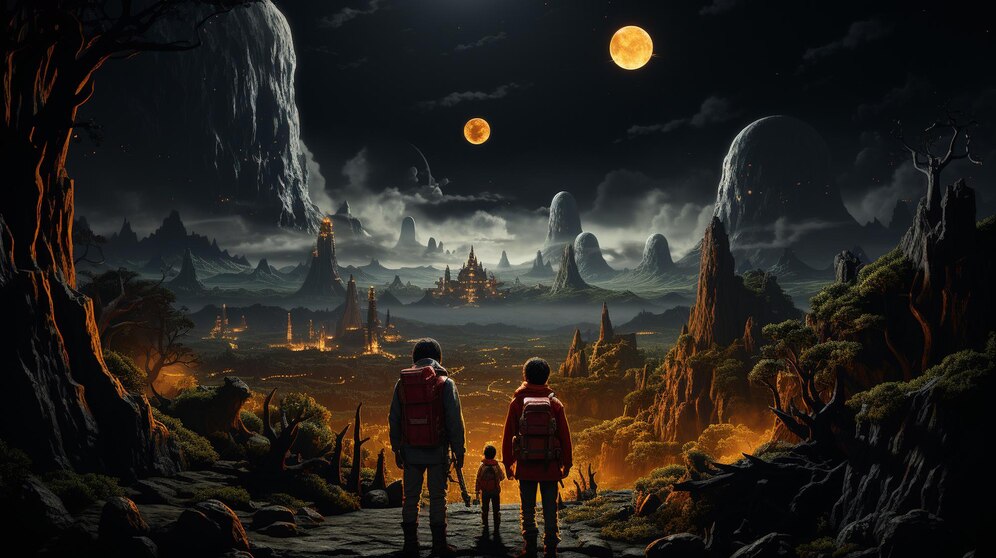In the intricate tapestry of human expression, few threads weave together as seamlessly as music and the arts. From the stirring strokes of a paintbrush to the melodious hum of a violin string, these forms of creative expression have danced hand in hand through the corridors of human history, each influencing and enriching the other in a symbiotic relationship that transcends time and culture. In this exploration, we delve into the profound connection between music and the arts, examining how they intertwine to create a harmonious symphony of creativity.
Table of Content
- Introduction
- The Language of Emotion
- Cross Pollination of Inspiration
- Cultural Reflection and Identity
- Social Commentry and Adovacy
- Conclusion
The Language of Emotion:
At their core, both music and the arts serve as languages of emotion, capable of conveying the deepest intricacies of the human experience. Just as a piece of music can evoke a spectrum of feelings, from joy to sorrow, the strokes of a painting or the movements of a dance can speak volumes without uttering a single word. This shared ability to tap into the wellspring of human emotion forms the foundation of their interconnectedness, allowing artists of all disciplines to communicate with unparalleled depth and resonance.
Cross-Pollination of Inspiration:
One of the most compelling aspects of the relationship between music and the arts is the way in which they inspire and influence one another. Consider, for example, the profound impact of music on visual art. From the vibrant colors of a Kandinsky painting inspired by the symphonies of Beethoven to the dynamic compositions of Picasso’s cubist masterpieces, music has served as a wellspring of inspiration for countless visual artists throughout history. Conversely, the visual arts have also left an indelible mark on the world of music, with composers such as Mussorgsky drawing inspiration from the works of visual artists like Viktor Hartmann.
Beyond the realm of traditional art forms, this cross-pollination of inspiration extends to the realms of film, theater, and beyond. The marriage of music and visual storytelling in film, for instance, has given rise to some of the most iconic moments in cinematic history, with composers crafting scores that elevate the emotional impact of the visuals on screen. Similarly, the incorporation of music and dance into theatrical productions adds an extra layer of depth and meaning to the narrative, transforming a mere story into a multisensory experience that resonates with audiences on a profound level.
Cultural Reflection and Identity:
In addition to serving as mediums of emotional expression and inspiration, music and the arts also play a crucial role in reflecting and shaping cultural identity. Just as each brushstroke in a painting or note in a piece of music carries the imprint of its creator’s identity and experiences, so too do these forms of expression reflect the cultural milieu from which they emerge. Whether it’s the haunting melodies of traditional folk music or the vibrant colors of indigenous art, the cultural heritage embedded within these forms of expression serves as a testament to the richness and diversity of human experience.
Furthermore, music and the arts have the power to transcend cultural boundaries, serving as bridges that connect people across disparate backgrounds and experiences. In an increasingly globalized world, the ability of music and the arts to foster cross-cultural understanding and appreciation is more important than ever, reminding us of our shared humanity amidst the diversity of our experiences.
Social Commentary and Advocacy:
Beyond their roles as vehicles for emotional expression and cultural reflection, music and the arts also have the power to serve as catalysts for social change and advocacy. Throughout history, artists have used their platforms to shine a light on pressing social issues, from political oppression to environmental degradation. Whether it’s through protest songs that give voice to the marginalized or provocative works of art that challenge the status quo, these forms of expression have the ability to galvanize communities and inspire action in ways that words alone cannot.
Conclusion:
In the grand tapestry of human expression, music and the arts occupy a place of profound significance, intertwining and intertwining to create a harmonious symphony of creativity. From their shared ability to convey the depths of human emotion to their roles as catalysts for social change and cultural reflection, these forms of expression serve as pillars of our shared humanity, reminding us of the power of creativity to transcend boundaries and unite us in a common language of beauty and truth. As we continue to navigate the complexities of the modern world, let us never forget the transformative power of music and the arts to inspire, uplift, and enrich our lives.
Follow us




